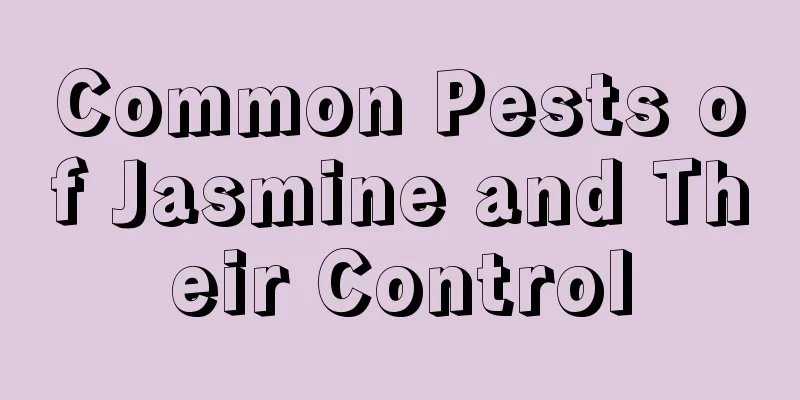Common Pests of Jasmine and Their Control

aphidAphids are herbivorous insects. There are many types of aphids discovered so far, with different sizes ranging from 1 to 10 mm. Aphids mainly gather in temperate regions. The flowering period of forsythia is from February to April. After flowering is the peak period of aphids. Unless there is heavy rain or extremely high temperature, aphids will crawl all over the branches and seriously affect the growth of forsythia. Prevention and treatment methods:Aphids are mainly divided into seedling aphids and ear aphids, and we should adhere to the principle of "selectively treating seedling aphids and focusing on ear aphids". Natural EnemiesThe natural enemies of aphids include ladybugs, aphid flies, parasitic wasps, aphid midges, crab spiders, and lacewings. Pests can be caught manually to treat aphids. Most families grow forsythia in pots, and this method is mostly used for large-scale garden planting. However, when potted plants are maintained outdoors, natural contact with the natural enemies of aphids will reduce the incidence of aphids. Drug preventionOnce pests are found, they must be dealt with immediately. If there are few pests, they can be directly scraped off with bamboo strips. When aphids are prevalent, spray aphid-mite clear emulsion or aphid-lice cleaner to kill them. Be sure to use different pesticides every year. Aphids are highly resistant to pesticides. If the same pesticide is used for a long time, aphids will develop antibodies. Big mothThe giant bag moth is common in Hubei, Jiangxi, Fujian, Zhejiang, Jiangsu, Anhui, Tianjin, Taiwan and other places. The larvae will parasitize on the plants and eat the leaves and branches, causing some of the branches to become bare. The giant bagworm likes to live in groups and can cause considerable damage. Prevention and treatment methods:Check potted plants regularly and remove and destroy any insect cysts found. If you find parasitic bees around, protect them. Spray with 1000 times diluted 50% chlorpyrifos emulsifiable concentrate. It is recommended to take preventive measures before the problem occurs and spray Bacillus or Bacillus thuringiensis for biological control. |
<<: Pest control of nail orchid
Recommend
How to plant succulents? The correct way to plant succulents purchased online (steps)
Succulents are generally planted in spring from M...
How to prune osmanthus and the time and method of pruning
Osmanthus pruning time If you want to do minor pr...
Does the rubber tree absorb formaldehyde?
1. Does it absorb formaldehyde? It is absorbable....
The flower language and legend of bellflower
The Flower Language of Bluebells Jealousy: In Gre...
Management methods for peach trees in February
The temperature is low in early February and the ...
Does sugarcane prefer shade or sun?
Does sugarcane prefer shade or sun? Sugarcane is ...
How to grow succulents fast
1. Pot soil selection When growing succulents, yo...
Can Fuchsia be hydroponically cultivated? Hydroponics cultivation methods and precautions
Can Fuchsia be hydroponically cultivated? Fuchsia...
Appreciation of Narcissus and Lily Flower Arrangement
Materials needed for narcissus and lily flower ar...
Ivy cultivation methods and precautions, ivy pictures
1. Breeding methods 1. Light: Ivy prefers sunligh...
How to grow the lotus lantern during the bud period
Flowers of the Lotus Lantern The flowers of the L...
How to choose a watermelon? How much does a pound of watermelon cost?
1. How to choose a watermelon Method 1: When choo...
Is loess or nutrient soil better for camellia? Special soil formula and preparation method for camellia
Is it better to plant camellia in nutrient soil o...
How to water Chlorophytum comosum
Habits: It likes a warm and humid environment, an...
What is the best month to plant golden cauliflower?
When to plant golden cauliflower It is more suita...









